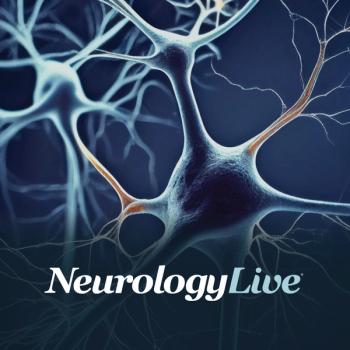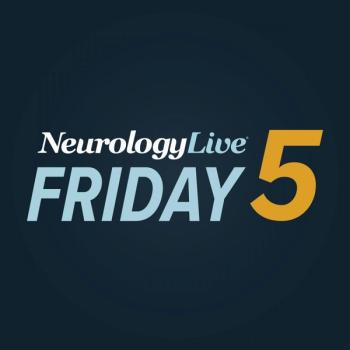
Frontotemporal Dementia Insights From Baptist Health’s Brain and Spine Symposium
Peter Gliebus, MD, discusses the clinical complexity of frontotemporal dementia and how Baptist Health’s symposium is helping to prepare the field for future advances in diagnosis and treatment.
The Marcus Neuroscience Institute at Baptist Health South Florida is set to host its Brain and Spine Symposium from May 15th to 16th at the Boca Marriott Town Center in Boca Raton. This two-day event will feature lectures and panel discussions on the latest advancements in neuroscience. Highlights include Timothy O'Connor’s, MD, presentation on augmented reality in neurosurgery and Frank Vronis, MD, discussing normal pressure hydrocephalus and shunt procedures. The second day will feature movement disorder expert Sameea Husain, DO, on new Parkinson disease treatments and Peter Gliebus, MD, Director of Cognitive and Behavioral Neurology, presenting on the impact of Frontotemporal Dementia (FTD).
In the days leading up to the symposium, Gliebus sat down with NeurologyLive® to discuss frontotemporal dementia’s complex clinical landscape and how Baptist Health is preparing for the future of neurodegenerative care. In the interview, he highlighted the challenges of early diagnosis, the heterogeneity of FTD pathology, and the urgent need for targeted treatments. Gliebus, who specializes in the diagnosis and treatment of conditions and diseases involving the central and peripheral nervous system, spoke on the future of disease-modifying treatments, strides in genetic research, and the lessons to learn from the Alzheimer disease community.
NeurologyLive: When you were putting this symposium together, what topics did you feel were necessary to discuss?
Peter Gliebus, MD: There are many new hot topics because there have been so many developments in neurology. Honestly, we need to subspecialize because it's almost impossible to keep up with everything happening in each area. Fortunately, we have subspecialists across almost all neurology subspecialties, and so we wanted to represent and provide the most up-to-date information to everyone attending the symposium.
What are the biggest knowns and unknowns about FTD?
FTD is one of the "big three" progressive cognitive disorders, and it affects a lot of people. There’s a lot we know—and a lot we still don’t. It’s a very heterogeneous disease in that many different pathologies can cause it. There are multiple protein changes and gene mutations that can all present with very similar clinical symptoms.
Clinically, we do have a fairly good grasp on the different phenotypes. Some people present more with behavioral changes—personality, emotional control, disinhibition. Others have more language involvement, either with expressive or receptive difficulties. Then there’s a subset that also has significant motor symptoms—like Parkinsonism, ALS features, or other syndromes.
From a neuropathology standpoint, we’ve identified many of the proteins involved in these syndromes. Genetically, there has been significant progress—up to 40% or more of people with FTD have specific genetic mutations. So, we’ve made progress there.
But many unknowns remain. For one, in the other 60% of patients, we still don’t fully understand what causes the disease. We may know what pathology is present in the brain, but we don’t know what initiates it. We also don’t yet have good biomarkers to detect those underlying molecular changes. Another challenge is early diagnosis. Many FTD patients get misdiagnosed or sent to psychiatric care first because of their behavioral symptoms, and there’s often a delay before the neurodegenerative aspect is recognized.
And lastly, even though we understand these behavioral changes are part of the disease, we still don’t have great tools to monitor them in a clinical setting—what’s normal versus what’s pathological. So while we’ve made real strides, we’re far from done.
How close are we to seeing therapeutics for FTD? And when that time comes, what lessons can we learn from the rollout of new therapeutics for Alzheimer’s disease?
We are definitely getting closer, but it’s not around the corner yet. The challenge, again, is the heterogeneity. There’s no single pathology to target. Right now, research is looking into treatments based on specific types of proteinopathy. So if we develop a disease-modifying therapy for TDP-43-related FTD, for example, it will only be applicable to that subgroup of patients.
What that means is, when a treatment is approved, only a subset of people with FTD will be eligible. That complicates things. It’s not like Alzheimer’s where you can screen for amyloid and tau. With FTD, we’ll need a way to reliably identify who has which pathology.
That said, the Alzheimer’s rollout has provided a kind of blueprint. We’ve already started thinking about the infrastructure and clinical workflows that will be necessary. We know how to build treatment pathways, and that will be useful when FTD therapies become available.
As a clinical community, how are we working toward tackling some of the more difficult symptoms of FTD?
Right now, it’s all very personalized. Different patients present with different symptoms, and that dictates how we manage them. For patients with behavioral symptoms—like emotional dysregulation, impulsivity, disinhibition—we focus a lot on caregiver education. We teach de-escalation techniques, distraction methods, redirection. Medications can also help—SSRIs, anxiolytics, and sometimes antipsychotics for more severe cases.
For patients with language difficulties, we rely on speech and language therapy. We also work with caregivers to simplify communication: shorter sentences, pauses, verifying comprehension before moving forward. There are also some communication aids and technology tools that can help. When there are motor symptoms, like in the corticobasal or ALS variants, we focus more on physical and occupational therapy, assistive devices, and anything that can maintain function and independence.
So again, it’s very individualized. The type of presentation dictates the treatment strategy.
Where should research efforts be directed going forward?
That’s already a major focus area, and I think most people would agree—one of the top priorities is developing biomarkers that can identify the specific protein pathology involved. Right now, we can diagnose FTD and see atrophy in the frontal or temporal lobes, but we have no way of knowing which protein—TDP-43, tau, FUS—is causing it unless there’s a known genetic mutation.
We also need more sensitive tools to identify these patients earlier—at the very initial stages, not even talking about preclinical detection yet. And of course, we need treatments—targeted, disease-modifying treatments specific to each subtype of FTD.
Transcript edited for clarity.
Newsletter
Keep your finger on the pulse of neurology—subscribe to NeurologyLive for expert interviews, new data, and breakthrough treatment updates.


































